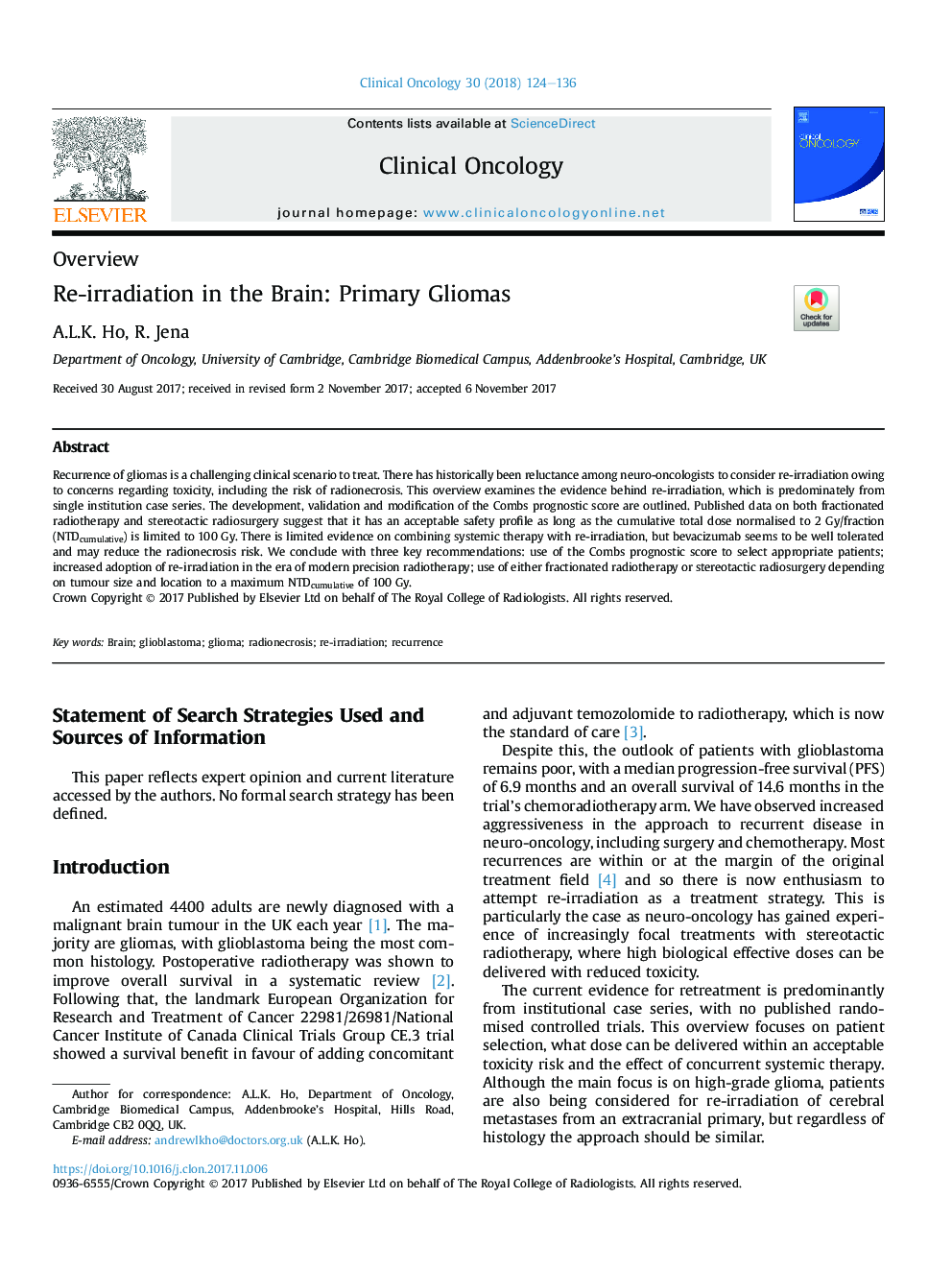| Article ID | Journal | Published Year | Pages | File Type |
|---|---|---|---|---|
| 8786220 | Clinical Oncology | 2018 | 13 Pages |
Abstract
Recurrence of gliomas is a challenging clinical scenario to treat. There has historically been reluctance among neuro-oncologists to consider re-irradiation owing to concerns regarding toxicity, including the risk of radionecrosis. This overview examines the evidence behind re-irradiation, which is predominately from single institution case series. The development, validation and modification of the Combs prognostic score are outlined. Published data on both fractionated radiotherapy and stereotactic radiosurgery suggest that it has an acceptable safety profile as long as the cumulative total dose normalised to 2 Gy/fraction (NTDcumulative) is limited to 100 Gy. There is limited evidence on combining systemic therapy with re-irradiation, but bevacizumab seems to be well tolerated and may reduce the radionecrosis risk. We conclude with three key recommendations: use of the Combs prognostic score to select appropriate patients; increased adoption of re-irradiation in the era of modern precision radiotherapy; use of either fractionated radiotherapy or stereotactic radiosurgery depending on tumour size and location to a maximum NTDcumulative of 100 Gy.
Related Topics
Health Sciences
Medicine and Dentistry
Oncology
Authors
A.L.K. Ho, R. Jena,
